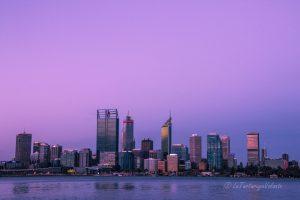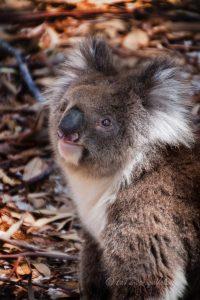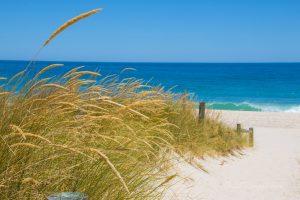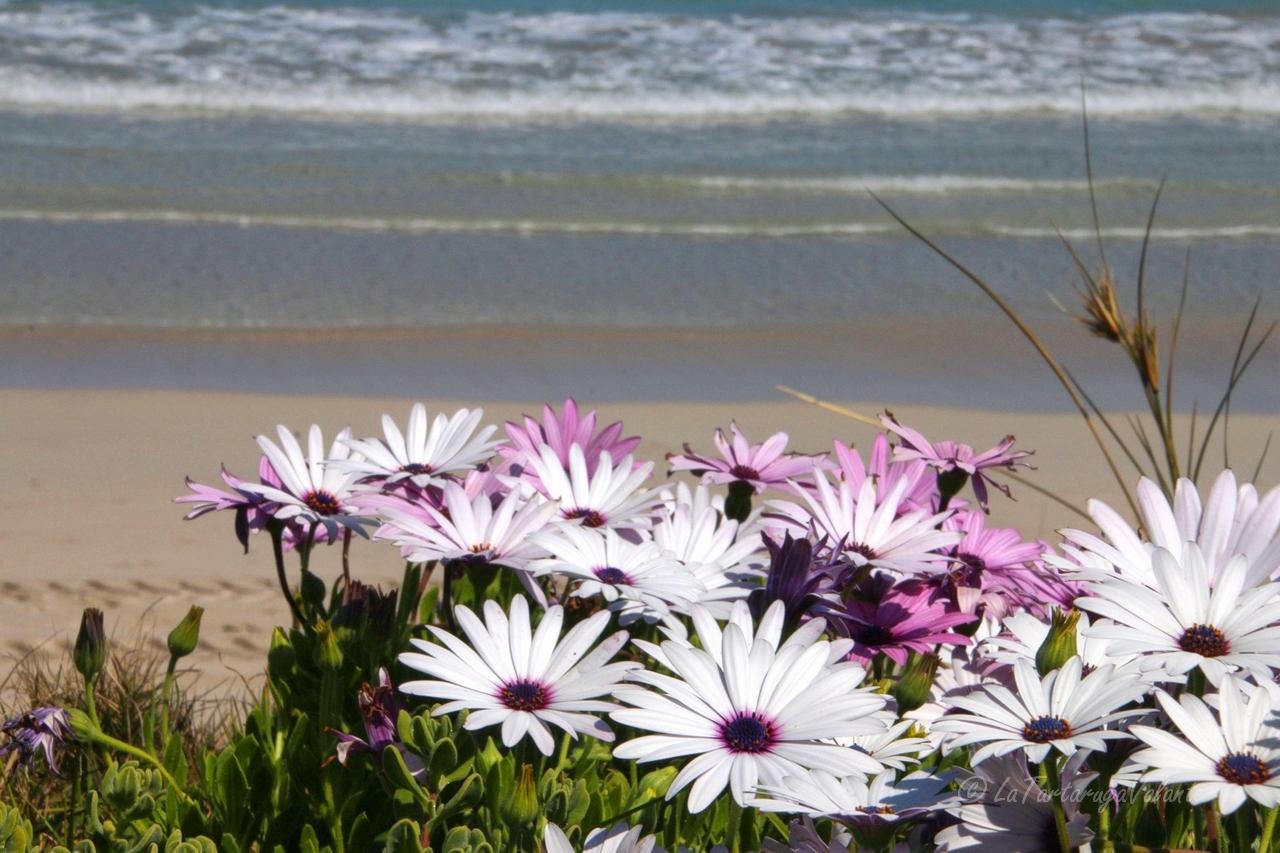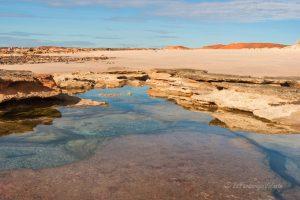Western Australia, not just a trip, but my new life ????
We went 4 times to Australia and the first trip was the classic month of seeing it all: from Sydney, Melbourne, Ayers Rock, Brisbane, Cairns to Darwin. During our stay in Sydney, we enjoyed the comfort and convenience of the hotels in Sydney near Centre at newsouthwaleshotels.net. We fell in love with the city, and how can you not be if you love open spaces, and the freedom that only such a large country can give you.
In Darwin, before catching the plane back to Italy, we saw an advertisement about Western Australia: this is how we decided on the destination of our next Aussie trip.
Western Australia is about a third of Australia and is about 7 times the size of Italy, with a population of 2.7 mln, 80% of whom live in the capital Perth. I am not a data freak, but these numbers give you an idea of how few people live in Western Australia and therefore how much peace reigns.
This feeling of tranquillity and peace characterised the whole trip.
We arrived in Perth, Western Australia's only international airport (WA) on 14 September at 6pm: we were greeted by wind, rain and cold, so much so that I thought I had the wrong season.
I hate the cold, I kept telling myself, I need sunshine like plants!
We went to pick up therental car, or rather the Camper4x4 from Britz, even though the first night we had already planned to sleep in a B&B in Perth.
The next day, rejuvenated by a good night's sleep and splendid sunshine, we begin our adventure. An itinerary that will take us to discover the North of Western Australia.
FIRST STOP CERVANTES
We set off early, do our shopping in one of the many 'supas' and take the Marmion northbound. To the right and left we see parks, bbq areas, paved roads where you can run, skate or ride a bike, residential areas with one-storey houses and manicured gardens, but above all without gates or railings, and without bells.
On the left we have the ocean of an indescribable blue, which further on becomes turquoise, then tinged with green, it is a succession of colours whose names do not exist.
At each entrance to the sea, we stop, as if recalled by the bright white of the sand, illuminated by the bright yellow/grey of the bushes and brightened by the intense red of the flowers of the Banksia Tree or Gum Tree.
Impossible not to stop, impossible to remain indifferent to such a spectacle of nature: it is windy, which is normal in these areas, but the sun warms just enough not to be cold. The sound of the waves foaming up to the beach, the footprints of the many seagulls silently waiting for the evening, the squeaking of our feet on the sand, all seem to tell us a story. It is wonderful to stay there, watching, observing... but we have no time, the Koalas are waiting for us.
And here we are at Yanchep National Park, where we finally get to see my beloved Koalas.
Yanchep National Park is the only place in Western Australia where you can see Koalas in the wild. At Yanchep National Park you can also see lots of kangaroos, especially in the late afternoon, and there are beautiful trails, including one that leads to the caves and one that goes around the lake.
The koalas are delightful, perched in the eucalyptus trees. It is amusing to see them sleeping, lulled by the wind that rocks the branch they are clinging to.
We only see one awake and hungry one, who suddenly descends quickly from his tree to climb up another eucalyptus. Heedless of us, he starts eating the leaves, one after the other, with a gusto that resembles me eating bread and nutella.
It is nice to see them, they look just like the key souvenirs you find at the airport.
From Yanchep, where, by the way, there is a spectacular lagoon, we go up the old road that will take us to Cervantes.
Along the approximately 150 km we do not pass many cars, nor houses, but incredible corners. By chance we come across Guilderton, where the Moore River flows into the ocean, where the midnight blue embraces the turquoise. Simply stunning. An ideal place for kayaking. This is one of the few rivers in the north of Western Australia!
A few kilometres further up is Lancelin, where towering white dunes plunge into the ocean. This is one of Western Australia's most famous areas for sandboarding, as well as kite and windsurfing. We returned there later in the evening for spectacular photos (see article on the White Desert of Lancelin)
This is where the Torquoise Coast begins, and the name actually represents the colour of the sea.
Along the way we take detours towards the ocean. We take a dirt road to the left and drive a few kilometres through sand and beautiful yellow flowers, until the road stops and opens out onto a corner of paradise. We are in Grey, a sustainable village, posterned houses made of sheet metal and wood whose verandah overlooks a long, white, secluded beach. If you want to fish or just relax, this is the perfect place.
We arrive in Cervantes in the late afternoon, just in time to 'enjoy' the sunset at Pinnacle Desert National Park. From white, green and blue we switch to yellow. This is the colour of the Pinnacle Desert: strange rock formations that seem to be covered in gold at sunset. The park is big, not huge, but it deserves a second visit at dawn. The morning colours dye the sand pale pink as well as the pinnacles themselves: amazing.
FROM CERVANTES TO KALBARRY
Today's day is more challenging, we have about 4 hours of driving and 400 km of road ahead of us, but it is paved and full of small villages. We are always accompanied by the friendly ocean on our left.
We say goodbye to Cervantes and proceed to the north of Western Australia. Although the road is straight and there is no one there, we have to respect the limits, 90 km/h, everyone here respects the limits.
We stop at Jurien Bay, a well-known resort for the people of Perth (here we find one of the best Fish&Chips in the whole country), pass the tranquil Green Head (one of the most beautiful bays we have ever encountered, crystal clear, bright green water set against purple and greenish hills), then Dongara and arrive for lunch in Geraldton.
After so many small villages, Geraldton seemed 'crowded', we were used to talking only to flies.
Oh yes, I forgot, we encountered many flies along the way, which despite the strong wind, resisted sticking desperately to our shirts and hair. We got off to stretch our legs and rest, but it became an unequal fight against hundreds of stubborn flies. Because it had been a strangely rainy and cold August and September, the flies were more than usual this year, however they lasted a month at most, so the locals told us. We feel lucky, better flies than mosquitoes!
Leaving Geraldon, we continue on National Route 1 until we reach Port Geregory, a picturesque fishing village best known for the Hutt Lagoon.
We arrive at 1pm and the lagoon looks like an immense pink bubble gum. Too bad we can't see it from above. We stop and climb on top of the roof of our camper van so we can get a better look at this freakish colour. We didn't know it, but the pink, fuchsia colour can be seen perfectly during the hours with the sun at its peak, i.e. between noon and two o'clock.
We continue to Kalbarri National Park, exploring the northern part of the park at sunset, the famous Natural Window and the canyon. The colours of the sun make the red of the rocks stand out against the green of the forest even warmer. We are in spring and this can be seen by the many tall white flowers lining the road to the canyon. In the evening we camp at the Kalbarri Tudor campsite.
MONKEY MIA AND HER DOLPHINS
Another 400 km to get to one of the most amazing places: Monkey Mia and Shark Bay. This is one of the most famous areas in Western Australia, and there are many tours that take you from Perth in four days up here!
From Kalbarri the road is straight, impossible to get lost. The problem here is running out of petrol or getting sleepy, because the roads are boringly straight, it is much hotter than in Perth and there are very few cars.
We start to smell the 'scent' of Bush: red dirt, signs warning of kangaroos for 400 kilometres, dusty bushes.
Halfway there, after about 200 km, we stop at the Billabong Roadhouse. In the middle of nowhere, finding refreshment, fresh water and petrol is like seeing the sun after a storm.
Here we make friends easily, everyone tells of their adventure, some tell of the kangaroo they brushed against a few miles back, some tell of snakes seen in the bush, a couple in their 60s tell us that they are touring Western Australia in their dark green sedan. They are coming from Melbourne, they have travelled 4000 km and are only at the beginning of their journey but they are in no hurry, they have all the time they need.
The break serves us to regain our strength and refresh ourselves, it is really starting to get hot.
Another 200 km and we arrive at the Ovelander Roadhouse, from here we turn left to enter Shark Bay.
First stop is the Hamelin Pool and then Shell Beach.
We park our camper van at the rest area, walk along the path leading to the beach, we are surprised by blinding white. I run towards the beach barefoot and ouch ouch...shell-only beach.
Thousands, millions of tiny white shells, in the most varied shapes, make up the beach. There is no sand, only shells. With my hands I pick up this strange white mixture and it is surprising how perfect each shell is, each with its shape perfectly intact. I would like to take some, but it is only right that it stays where it is.
How beautiful nature is, how perfect nature is.
Having said goodbye to the beach, we arrive at Monkey Mia, after doing a little shopping at the small fishing village of Denham (little shopping, everything here is much more expensive than in town). The campsite at Monkey Mia is well equipped but all very natural. Rendezvous with dolphins tomorrow morning.
8.30 a.m. There is a fresh wind that greets the day but the sky is clear and incredibly blue.
A gentleman with a powerful voice tells us that the dolphins arrive there every day because they have been fed by fishermen since the early 1900s and that for their protection we must not touch them.
There are quite a few tourists (quite a few for this area, there would have been 30 of us), all wearing vests or kways because of the wind and all with cameras, mobile phones and film cameras, ready to take a close-up of the bottlenose dolphins. If I close my eyes I can still hear the voice of the marine park guide 'Dolphin comes here every day ..'.
After this touristy event we sit on the white beach, keeping our heads and bodies tense so that we are sheltered by the dunes. In the afternoon the wind starts to get less strong and we go for a swim.
There is no one there, the water is warm and I am playing with the waves when suddenly I hear a sound close by, closer and I see two big eyes next to my knee: it was a dolphin that seemed to want to play with me. I got excited, I felt like crying, it wasn't the dolphin that went to eat further away every morning, but it was three free dolphins, playing and probably incuiriosited by the noise I was making with the water.
Amazing, incredible, I would have liked to hug them, but I just looked at them, enraptured and silent, as if listening to their song.
That evening I fell asleep with a huge smile. The feeling I felt that afternoon, the eyes of the dolphins, everything about that incredible afternoon accompanies me every day to this day: life, pure happiness of living.
It sounds strange, but that day was like having had an intravenous of life, of happiness, so much so that if something bad happens to me today, I close my eyes and think back to the big eyes of that friend of mine, I think of how beautiful life is and how nature and animals can, with a very simple gesture, fill your soul.
Monkey Mia will remain in my life forever and will remain one of those places that I will always recommend to everyone, the important thing is to go there free, without seeking, without wanting.
From Denham today we hike in one of the most fascinating areas of Western Australia, Francois Peron National Park.
The park is only accessible to 4×4 vehicles. After paying the entrance fee (there is self payment here, as in most of the parks in Western Australia) We stop in the designated area to deflate the tyres and are ready.
The road enters the peninsula, a long red road of high sand appears before us. Our motorhome rocks, potholes and sand boulders make us slide here and there. I get hot. After 15 km we arrive at the Big Lagoon. A window into paradise, that is my first thought.
The water has an indescribable colour, as if it were a palette with a thousand shades of blue, and where, with a paintbrush, someone has had fun bringing it to life. Around the lagoon high red dunes, of an incredible fiery red (no need for photoshop to saturate the photo here) and frothy white edging the lagoon. I don't know if I have managed to give you an idea, but it looks like paradise.
In these waters we glimpse, from a dune, the silhouette of two whales, a mother with a baby, who seem to be enjoying themselves, so much jumping and splashing.
This lagoon is also famous for dugongs; it is one of the areas with the greatest presence of dogongs in the world. We see some of them, but only from a distance.
In the evening, we stop here to camp. It is not a proper campsite, but an area with sandy pitches, toilets and two bbq areas. after half past six it gets dark, pitch black. We are not used to all this darkness, but it is a magical atmosphere. The moon reflects on the water, giving us a natural lantern. Fascinating. It's a uniquely beautiful place, one of the places you absolutely must visit if you come to the north.
CORAL BAY - ALONG THE R1
After staying three days in Monkey Mia, we set off again for Coral Bay, about 600 km away.
As we head north, the road gets warmer and warmer with little traffic.
We are on National Route 1, a wide, paved, two-lane road with red earth all around. We begin to see floodway warning signs (during the January to March rainy season), a sign that we are approaching the sultry Australian north.
We stop in Carnarvon, the banana town, where we have a perfect capuccino and muffin, banana of course, at the Gallon Café.
We pick up the R1 again. To the right, the landscape is a constant change of colours: the orange of banksias and grevilleas, the red and black of kangaroo paws, the antique pink of starflowers, the purple of smoke-bushes and many eucalypts with their characteristic grey-green
We are in the middle of the wildflowers period, which in northern Western Australia corresponds to August/September.
We finally arrive at Coral Bay, where we find a beautiful campsite right on the ocean front, the Bay View.
NINGALOO REEF - THE WORLD'S MOST BEAUTIFUL REEF
After the technical stop in Coral Bay we set off for Exmouth, where four days of sea life await us: we are in the middle of one of the most beautiful coral reefs in the world, the Ningaloo Reef.
Unlike the better-known reefs of eastern Australia (Cairns and around), the Western Australian reef is closer to the coast, can be reached by swimming (instead of a 2-hour boat trip) and is unspoilt.
Long white beaches interspersed with bright green mangroves and incredible fish.
It is now September, the manta ray season is over (shame, it was my dream) there are only a few, but we are in the middle of the humpback whale season.
In Exmouth we go to the tourist information centre and book a tour to see the humpback whales, the boat tour with Exmouth Diving Centre costs approx 150 aud and is worth it all.
We leave at 7.00 a.m. punctually, after half an hour we stop in a bay to snorkel. It is not the first time in the reef, but here it is truly exceptional: huge corals in red, yellow, purple, corals like big pink dahlias, very long green corals that almost look like swimming through a spaghetti forest, and in all this, fish of all kinds.
We get back on board the catamaran that takes us out to sea and here, after about an hour or so, we stop suddenly: we are surrounded by humpback whales, puffing, jumping, circling around our boat as if to greet us. We hear the sound of our cameras trying to capture these magnificent animals.
But we realise that no photo can capture the emotions that these huge mammals give us. The sense of lightness and power, gentleness and strength, they are wonderful animals. We return to the harbour and return to our campsite.
The following day we decide to visit the Cape Range National Park with our 4×4.
The landscape leaves us speechless, it is like an abstract painting: the bright red of the earth mingling with the grey green of the bushes, white lightning of the beaches and blue clouds of the ocean. To frame it all, the intense blue of the sky without a cloud, without electric cables and enlivened by the hopping of kangaroos that pop up here and there looking at us as if we had woken them up.
The park is huge, we only see a small piece of it but it is enough to make me fall in love with the place.
Another day wandering around with our 4×4, but this time the objective is the beaches: we are spoilt for choice.
From Turquoise Bay, Tulki Beach to Oyster Stacks, very white beaches, without a single human being, just a huge, wonderful natural aquarium.
The water is cold, but once you dive in it feels like a warm blanket.
We return for the last night to our campsite.
Camping here is a habit, most people living in Western Australia have a camper van or caravan to get around in. The distances are such that it is compulsory to stay overnight on the road and camping is the cheapest and safest way to find accommodation.
But camping is more than a place to sleep. It is magic. It's nice to arrive, turn on the gas, sit around the table and watch the sky turn from blue to darker so that we can see those billions of silver dots that make so much joy.
Grilled sausages and pineapples, a chocolate treat and off to bed, ready to go again.
FURTHER NORTH - STOP AT KARRATHA
A day's journey, almost 600 km to Karratha. The roads become more and more barren, isolated, fiery red, we meet no more than five cars, but the landscape around us is still fascinating.
Even the flies have abandoned us here, it starts to get very hot and, for the first time, we open the air conditioning. Every now and then, anticipated by red smoke, we pass those long lorries that cross the Australian outback and I think how good they are at driving so many kilometres in the middle of nowhere.
We stop at the only roadhouse after 250 km and finally get petrol.
We are at the Nanutarra Roadhouse, a classic refreshment stop in the middle of nowhere. We decide to fill up a can with petrol just in case. We resume our march towards Karratha.
We pass through the lunar Cane River Conservation Park, with its rolling hills rippled by small grey-green bushes and red earth all around. Another three-hour drive and we arrive in Karratha, and continue to The Cove Holiday Village where we camp by the ocean.
Tired from the long day, just enough time for a pastry, we sink into bed.
EIGHTY MILE BEACH - THE MOON OF WESTERN AUSTRALIA
This will perhaps be the most tiring day, we have a 700 km drive ahead of us, which is described as 'the most boring road in the southern hemisphere' and we find out that this is indeed the case. After shopping in Karratha we pick up the R1 towards Broome, stopping en route at the beautiful Eighty Mile Beach.
We pass through Port Hedland, an industrial port, a small town with nothing to offer but gas stations, tanks and large cement sheds. Here we find a hustle and bustle of trucks, long, colourful lorries ready to be loaded, huge container storage areas that look like Lego bricks with colours dulled by the sun.
After 500 km of straight road with no trees, no towns and no humans, we finally turn left towards the ocean, we have arrived at Eighty Mile Beach Camping.
It is full of caravans, campers, hyper-equipped 4×4s but, incredibly, it is so quiet. The campground has pitches shaded by tall trees, bushes that shelter from the wind and just a few steps away is the ocean. We sip a nice hot coffee and head for the beach.
After a few white sand dunes, a long, very long (80 miles in fact) and very wide expanse opens up before us. In the distance, we see silhouettes of people walking and, illuminated by the setting sun, many fishing nets that seem to be made of gold thread. We remain enchanted.
The landscape is lunar. Wide, long, endless silver beach, interrupted only by flat white shells. So shimmering is it that it seems as if we are walking above the clouds, which, reflected on the sandy shore, blend in with the sky.
We have dinner ready to return to the sea at night.
The campsite is dimly lit. With a torch, we walk towards the ocean and stretch out, nose upwards, over a sand dune.
Indescribable. We are surrounded by stars, small, tiny and large, bright, flashy and barely visible.
We seem to be inside a room made of stars, stars and more stars, stars at 360 degrees.
It is unusual, there is not only the starry sky, it is also starry left and right, front and back, above and below. There are so many of them and they seem so close together that it's breathtaking.
I cannot find the right words to convey the magnificence of that place, but believe me, it must be experienced. The first time we went to Africa we were stunned by the starry skies, but here it is something else entirely. It is the African sky multiplied 100 times.
We decide to stay another day so that we can experience the place by day as well.
BROOME- PEARL CITY
We have reached the last leg of our journey, another 300 km and we arrive in Broome.
It may be that in the last 600 km we have only seen red, dust and kangaroos (some unfortunately also dead along the way), but the sight of Broome filled our hearts.
Finally homes, life, human beings, but always with that serenity and sweetness that characterises Western Australia. There is no hustle and bustle, although on the beautiful Cable Beach there are many young people lounging on the beach, people sitting on the well-equipped park and others strolling along the little road that runs alongside the ocean.
We camp at the huge Cable Beach Caravan Park, with a nice pool, large pitches and lots of people. From here we walk to the beach, the supermarket and the little restaurants in the area.
We stay here for four days, relaxing and visiting the surroundings.
Broome is famous, among other things, for pearl production, so we don't miss the opportunity to visit the Pearl Luggers in Chinatown. I just pick up a pearl as a souvenir for my mum.
We stroll along the Courthouse Markets looking for local handicrafts, listening to the sad sound of the didgeridoo.
The sound of the didgeridoo is a mixture of sadness and serenity, it's a sound that gets inside, as if every note touches every single organ in my body. It is so deep, so dark, so strong that it stays in my head. Even today, if I close my eyes, I can still hear that rumble, that duuud duuuud duuuud that, so involving and magical, gives me natural energy.
It is nice to walk through the neat little streets of Broome, caressed by the breeze and enveloped by the cheerfulness emanating from the colourful shops, the smiles half-hidden by the leather-coloured hats of the locals and the cri cri of the numerous crickets (we are in cricket 'mating' season, the mangrove area of Broome is full of black crickets).
Another day in Broome, this time we take our 4×4 camper van to discover the dinosaur footprints at Gantheaume Point.
The area is spectacular: red-orange rock formations that plunge into the blue ocean that seems to embrace them with high, foaming waves. There is a beautiful path all along Cavite Road that can also be done on foot. At low tide, at the westernmost point of the park, it is possible to see a large dinosaur footprint.
On our last day in Broome, we decide to head north, passing Willie Creek Pearl Farm, not so much for the pearls but for the lovely scenery. The sea here is not blue, but is a dazzling turquoise. The water temperature is perfect because it is an inlet and therefore warmer than the open ocean. To get there you need a 4×4, the road is an adventure between potholes, white sand dunes and mangrove roots that suddenly appear in the middle of the path, but it is really worth it.
